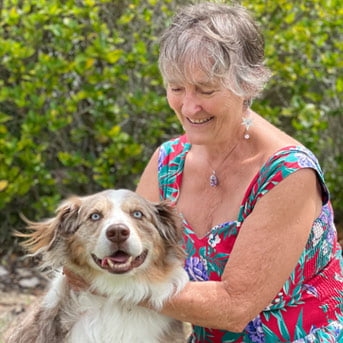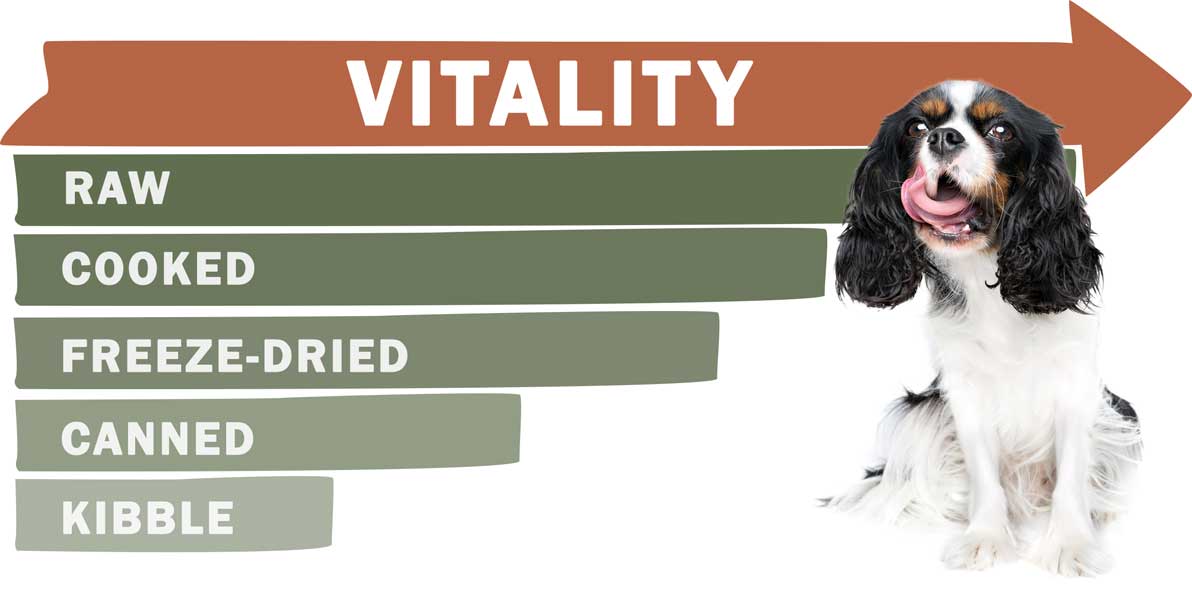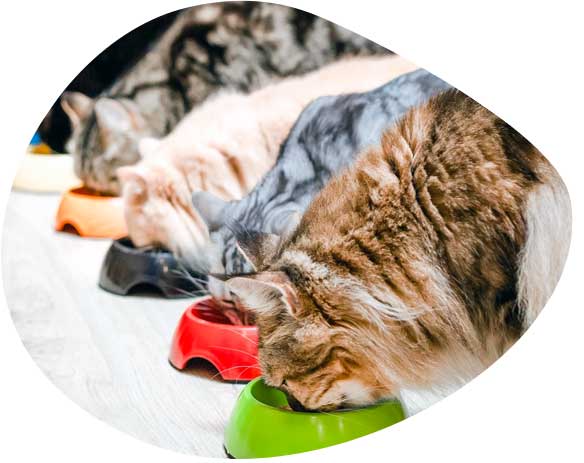by Holistic Actions! Team | CalendarEvents
Details
Join Hana Mäkinen, a Professional Animal Communicator and Grief Specialist, to explore how to deepen communication and connection with your pet through every stage of life. Learn practical tools to honor your pet’s autonomy and navigate aging and end-of-life transitions with love and mutual respect.
When & Where
January 20, 2025 (8:00 pm) – January 20, 2025 (9:00 pm)
Eastern Time. Member Webinar – check your email for link
by Holistic Actions! Team | CalendarEvents
Details
Celebrate and deepen the bond with your animal companion by learning to intuitively understand their wishes, helping you to support their health and happiness throughout all stages of life with Christine Noble Seller, International Animal Communicator Advocate.
When & Where
December 23, 2024 (8:00 pm) – December 23, 2024 (9:00 pm)
Eastern Time. Member Webinar – check your email for link
by Holistic Actions! Team | CalendarEvents
Details
Dr. Jeff Feinman and Dr. Christina Chambreau, holistic veterinarians from Holistic Actions! are holding open hour on zoom for all the pet parents: bring your pet questions and concerns and get a different opinion. Click on “Sign Up” to register (it’s free)
Sign Up
https://www.holisticactions.com/qa-with-ha
When & Where
February 28, 2025 (12:30 pm) – February 28, 2025 (1:30 pm)
Eastern Time. Free Webinar – Click on “Sign Up” to register.
by Holistic Actions! Team | CalendarEvents
Details
Come for this informal member gathering: Aruna, operations manager, will show how to make the best use of your member benefits and answer your questions about using the website.
When & Where
December 30, 2024 (8:00 pm) – December 30, 2024 (8:30 pm)
Eastern Time. Member Webinar – check your email for link

by Holistic Actions! Team | HA! Staying Healthy
As the holidays approach, the theme of quality of life feels especially relevant. It’s that magical time of year when we strive for warmth, connection, and joy—but it often comes packaged with an extra dose of stress. From managing social expectations to navigating tangled strands of twinkling lights (and emotions), this season has a way of testing our inner calm.
But what if we approached this holiday as a gift to ourselves?
Instead of chasing perfection or getting caught in the whirlwind, we could take small moments to prioritize what truly enhances our lives: simple joys, connection, mindful breathing, and gentle self-compassion.
Let’s start by giving ourselves permission to rewrite the season’s story—a story where “Silent Night” doesn’t turn into “Holy Moly! Night.” 😊

Here’s a simple practice to center yourself and connect with your furry (or feathered) companions:
Pause and Pet Practice:
- Find a quiet moment with your pet. Sit beside them or hold them gently.
- As you stroke their fur, feathers, or scales, match your breath to the rhythm of your movements—slow and steady.
- Notice the warmth and texture under your hand, the rise and fall of their breathing, or the look of trust in their eyes.
- Say a silent affirmation: “In this moment, we are both at peace. My calm nurtures me, and it nurtures you.”
- End by thanking them for the unconditional love they bring into your life.
In these moments of stillness, we create a sanctuary of calm—a healing space that transcends the holiday chaos. Watch how slowing down and synchronizing your breath can transform both you and your pet, offering a reminder of what truly matters.

by Holistic Actions! Team | HA! FAQ, HA! Videos
This is the recording of our monthly Q&A session where Drs. Jeff Feinman and Christina Chambreau join forces to tackle pet guardian questions.
In this session we covered a range of health topics, including:
-
The Microbiome and Skin Health: Dr. Christina Chambreau shared insights on how skin microbiomes are impacted by washing practices, both for humans and pets, and how remedies such as tea rinses can help restore the skin’s balance.
-
The Vital Role of a Holistic Healthcare Team: The importance of assembling a holistic healthcare team, including homeopathic veterinarians, acupuncturists, and practitioners of energy medicine, was emphasized for maintaining pet health and managing critical illnesses.
-
Managing Stress-Related Digestive Issues in Pets: There was a discussion about how stress, particularly during travel, can trigger digestive issues like diarrhea in pets. Solutions such as increasing probiotics, using rescue remedies, and considering dietary changes were recommended.
-
Polycystic Kidney Disease in Pets: The conversation touched on managing polycystic kidney disease through both conventional and holistic approaches, including dietary adjustments, energy field balancing, and continuous monitoring of symptoms.
-
Chronic Respiratory Issues and Mycoplasma in Cats: A case involving a cat with chronic respiratory problems and a diagnosis of mycoplasma was discussed. The suggested next steps included incorporating holistic treatments like homeopathy and improving the mental well-being of both the pet and the guardian
Would You Like to Join Our Next Public Q&A Webinar?
We hold them every LAST Friday of the month.
Sign up below to get notified about the next session.
Dr. Christina
Christina Chambreau, DVM, is an internationally known homeopathic veterinarian and associate editor of the Integrative Veterinary Care Journal, she’s written several books on animal healthcare.
After opening her own homeopathy veterinary practice in 1983, she founded the Academy Of Veterinary Homeopathy and was on the faculty of the National Center for Homeopathy Summer School for ten years.
Dr. Christina is also an integrative medicine adjunct faculty liaison for the Maryland Veterinary Technician Program and lectures on a wide array of topics including integrating holistic options into veterinary practices, as well as guidance on how to choose the best approaches to heal animals and sustainability.
Dr. Jeff
Jeffrey Feinman, BA, VMD, CVH, graduated in 1985 from the University of Pennsylvania and was Penn’s first veterinary dual-degree University Scholar, holding both molecular biology and veterinary degrees. He is the founder of HolisticActions.com and dedicated to pet parent empowerment.
Dr. Jeff is devoted to researching about how to harness the innate power of the individual using Vitality and Balance. He and his wonderful wife Amy live with Archie, a rescue pup, and a Rex cat named Tigger.
by Holistic Actions! Team | CalendarEvents
Details
Join Dr. Erin Jones to explore how play, choice, and agency can enhance your dog’s well-being, strengthen your bond, and encourage positive behaviors, all rooted in the latest insights from human-animal studies and ethical dog training practices.
When & Where
December 2, 2024 (8:00 pm) – December 2, 2024 (9:00 pm)
Eastern Time. Member Webinar – check your email for link

by Holistic Actions! Team | HA! FAQ, HA! Videos
This is the recording of our monthly Q&A session where Drs. Jeff Feinman and Christina Chambreau join forces to tackle pet guardian questions.
In this session we covered a range of health topics, including:
- Jennifer adopted a 2-year-old rescue cat with limited health records. She plans to speak with her holistic vet about establishing a baseline for the cat’s health, including bloodwork and urinalysis, to monitor its condition going forward. Dr. Christina recommends using the Healthy Cat Journal to track the cat’s health and early warning signs.
- Melissa’s 10-year-old cat Poe has had slightly elevated SDMA levels in recent bloodwork, indicating early-stage kidney disease. Christina advises Melissa to find a holistic vet to work with, review the resources on the Holistic Actions! website, and consider dietary and supplement changes to support Poe’s kidney health.
- Nick’s 22-year-old cat with kidney disease has been eating strange things like silk plants, which can be an early warning sign of an underlying imbalance. Christina recommends exploring the cat’s diet, mental/physical stimulation, and energy healing modalities to address the root cause.
- Andrée’s 22-year-old rescue cat has had a history of urinating outside the litter box, which may be related to abandonment, grief, and aging. Christina suggests working with an animal communicator and trying various energy healing approaches to address the emotional and physical aspects.
- Dr. Christina summarizes the overall approach of Holistic Actions!, emphasizing the importance of addressing the underlying energetic imbalance, soothing symptoms, and using a variety of modalities like homeopathy, Chinese medicine, and energy work. She encourages participants to keep detailed journals, experiment with different treatments, and not discount older animals.
Would You Like to Join Our Next Public Q&A Webinar?
We hold them every LAST Friday of the month.
Sign up below to get notified about the next session.
Dr. Christina
Christina Chambreau, DVM, is an internationally known homeopathic veterinarian and associate editor of the Integrative Veterinary Care Journal, she’s written several books on animal healthcare.
After opening her own homeopathy veterinary practice in 1983, she founded the Academy Of Veterinary Homeopathy and was on the faculty of the National Center for Homeopathy Summer School for ten years.
Dr. Christina is also an integrative medicine adjunct faculty liaison for the Maryland Veterinary Technician Program and lectures on a wide array of topics including integrating holistic options into veterinary practices, as well as guidance on how to choose the best approaches to heal animals and sustainability.
Dr. Jeff
Jeffrey Feinman, BA, VMD, CVH, graduated in 1985 from the University of Pennsylvania and was Penn’s first veterinary dual-degree University Scholar, holding both molecular biology and veterinary degrees. He is the founder of HolisticActions.com and dedicated to pet parent empowerment.
Dr. Jeff is devoted to researching about how to harness the innate power of the individual using Vitality and Balance. He and his wonderful wife Amy live with Archie, a rescue pup, and a Rex cat named Tigger.
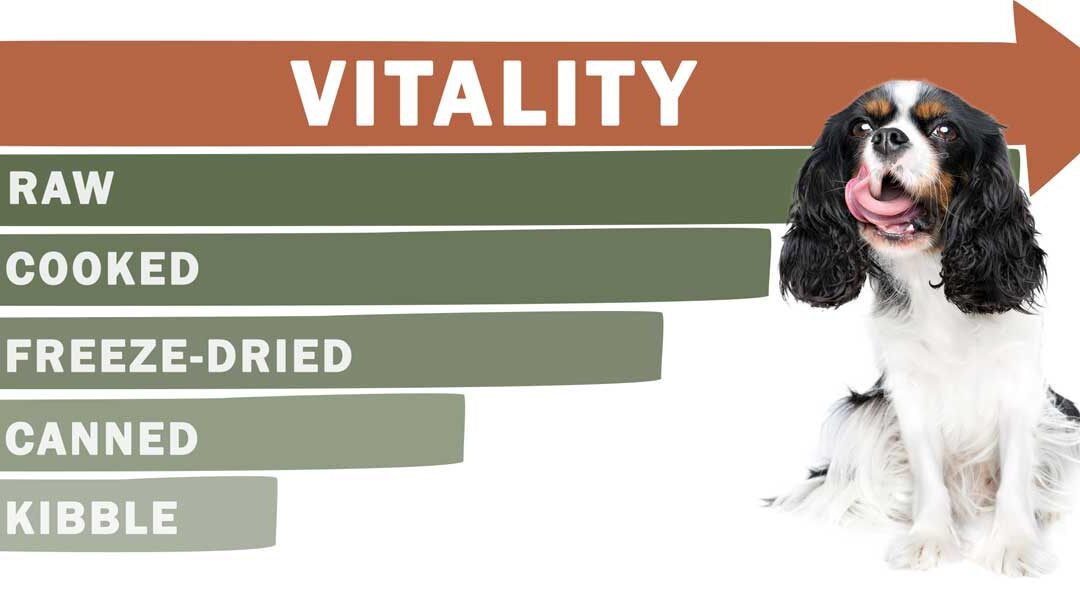
by Holistic Actions! Team | Uncategorized
At Holistic Actions! we believe that your pets’ diet plays a central role in their health.
The more vital the food you feed them, the easier it is to restore, promote, and maintain a balanced system. But not all food for pets is created equal. That’s why we created the Food Vitality Scale to share which food choices our vets feel are best for your pet.
The difference that a fresh food diet can make to your pet’s health is remarkable.
Just by adding one fresh food meal per week to their diet, you will often see improvement in their BEAM (Behavior, Energy, Appetite, and Mood.) And by phasing out commercially prepared foods altogether, you’ll see even more powerful benefits that include…
- Shinier, smoother, thicker, more odorless coat
- Reduced shedding
- Ears that never need cleaning
- Reduction or elimination of tear stains and discharge in the eye corners are gone
- Fresher breath and reduced plaque formation
- Hairball formation and vomiting slows and stops
- Sociability with people and other animals increases
- Stiffness and limping resolves
- Activity levels are boosted
- Training tends to progress more rapidly
- Weight and interest in food normalize
- Current allergies or illness improve or resolve
- Stool volume decreases
- Heightened enthusiasm for meal times!
[et_bloom_locked optin_id=”optin_6″]
Many serious ailments can be resolved simply by transitioning your pet from a commercial diet to a fresh one.
Drs. Tom Lonsdale and Ian Billinghurst (who share 75+ years of experience between them) provide compelling evidence for how a raw meaty bone diet (RMB) can result in dramatic health enhancements for both dogs and cats. Furthermore, research studies and case studies both demonstrate a RMB diet can prevent and eliminate most dental dis-ease in pets.
Every animal is individual, so you will see different results in each one.
Gail Pope of Bright Haven sanctuary is a valued faculty member of the Holistic Actions! Academy. For 20 years, she adopted cats 16-years and older, giving them a permanent home. She found that almost all of them could be fully transitioned to a strictly fresh food diet, and she credits this approach with playing a critical role in helping many of them to age 30 and older.
Fresh food feeding makes sense. The results speak for themselves!
How to start
These are the three words to keep in mind about fresh food feeding.
FRESHNESS
Fresh food is living food that has not been stripped of its vitality through commercial processing. The fresher the food, the greater the vitality. The greater the vitality, the greater the health benefits. Feeding only fresh foods to your pet allows you to safely steer clear of hidden and potentially harmful ingredients (like melamine) that are all too common in commercial pet foods. It also makes it easy to avoid the Three D’s: Dead, Dying, and Dis-eased. You no longer need to worry about metals and toxins in the packaging. Feeding fresh gives you peace of mind by knowing exactly what your pet is eating.
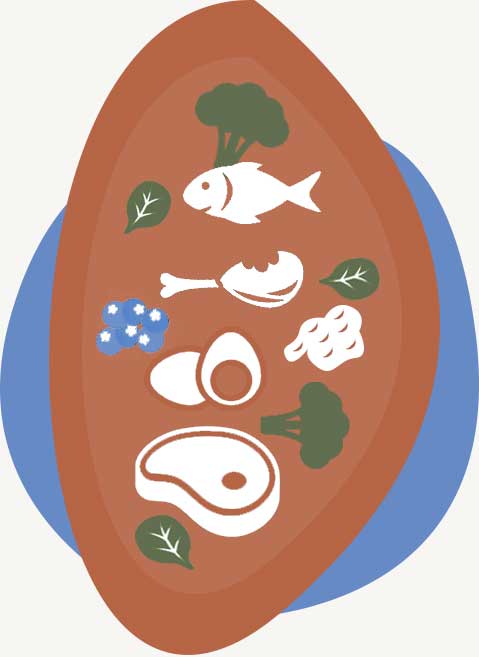

variety
Some pet parents who are new to fresh feeding wonder if it can provide all the nutrients their pet needs. The answer is, absolutely! In fact, a fresh diet that includes a wide range of foods fed throughout the week far exceeds the energy and nutrient value of commercially prepared foods. In, Rationale for Animal Nutrition, veterinary nutrition specialist, Dr. Randy Wysong, discusses this in detail. Here’s the summary:
- Nutritional “requirements” are based on averages, not individuals.
- Even the guidelines of the National Research Council (NRC) are prefaced by a statement that the recommendations are not definite and will continue to be modified.
- To know what an animal or person needs nutritionally, one must have a complete knowledge of each food ingredient (which can differ among individuals), complete knowledge of nutrition (we do not have that), and a complete knowledge of the digestive process of your individual animal.
For example, liquid diets for people and dry food diets for cats are touted as “complete and balanced”. They can indeed keep people or animals alive, but that’s hardly what we’d call optimal nutrition, nor even a baseline for such.
If you are feeding commercial kibble, canned, dehydrated or frozen raw, please rotate the brands. This is good for the microbiome and a buffer if a company goes out of business or changes quality of ingredients.
by Holistic Actions! Team | CalendarEvents
Details
Veterinary homeopath Dr. Jody Bearman will discuss how homeopathy can help your animal family with respiratory challenges. What can you do at home and how to know when you need a professional for more serious problems. Dr. Bearman always has lots of inspiring stories of healing with homeopathy.
When & Where
August 19, 2024 (8:00 pm) – August 19, 2024 (9:00 pm)
Eastern Time. Member Webinar – check your email for link
by Holistic Actions! Team | CalendarEvents
Details
Dr. Jeff Feinman and Dr. Christina Chambreau, holistic veterinarians from Holistic Actions! are holding open hour on zoom for all the pet parents: bring your pet questions and concerns and get a different opinion. Click on “Sign Up” to register (it’s free)
Sign Up
https://www.holisticactions.com/qa-with-ha
When & Where
August 30, 2024 (12:30 pm) – August 30, 2024 (1:30 pm)
Eastern Time. Free Webinar – Click on “Sign Up” to register.
by Holistic Actions! Team | HA! Lameness/Arthritis, HA! Videos
Dr. Judith Shoemaker shares a treasure trove of insights on causes of lameness and mobility issues in pets. It’s no surprise that being overweight is the most common cause, but Dr. Shoemaker also highlighted other critical factors like mouth conformation and toenail length.




